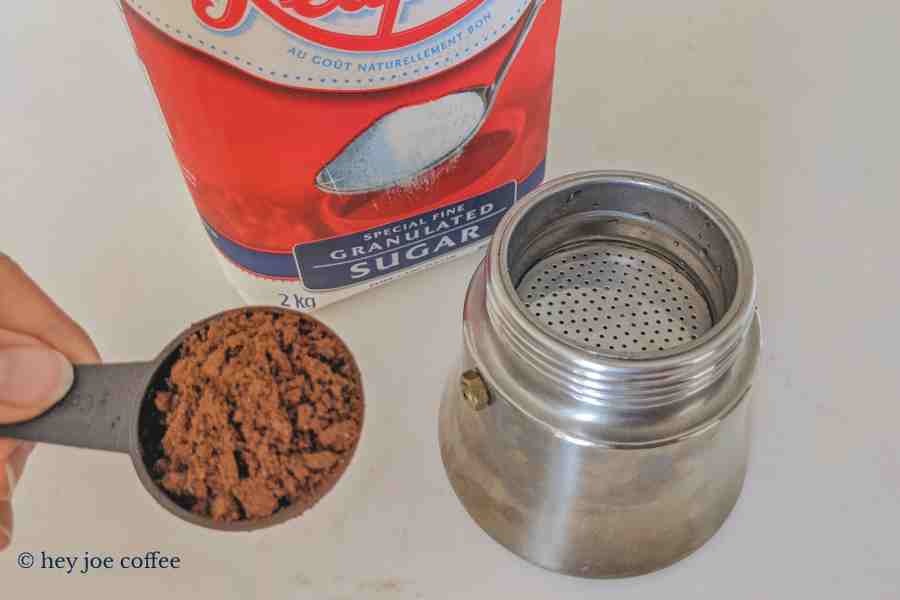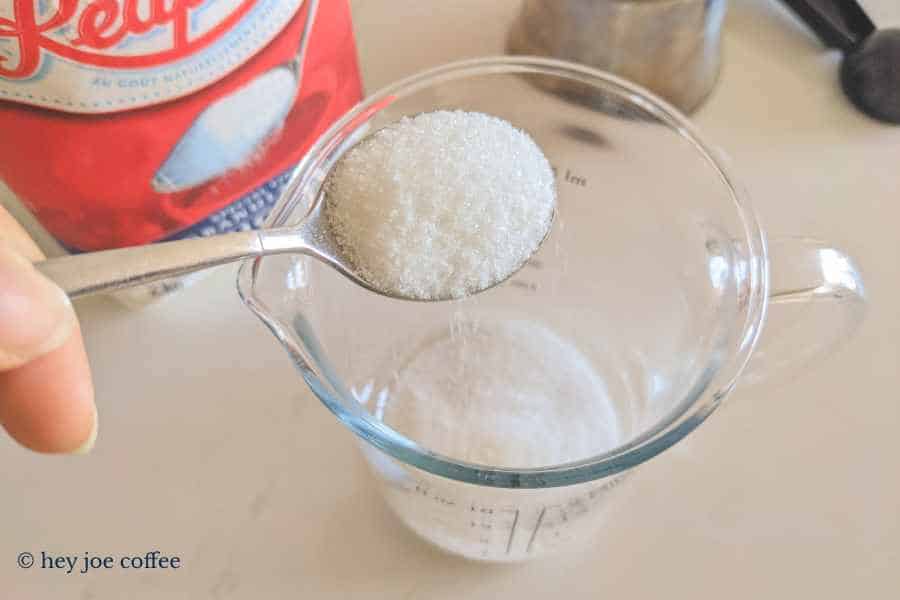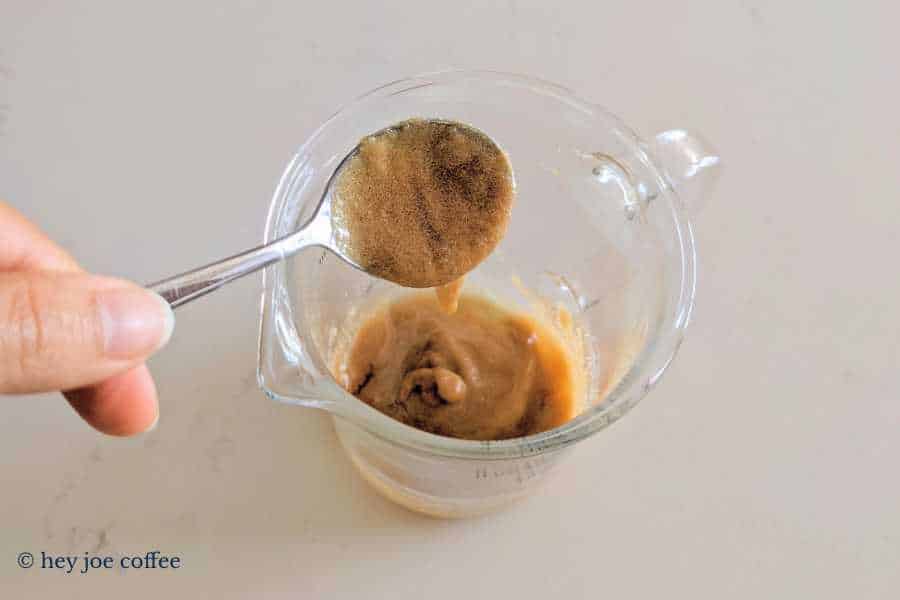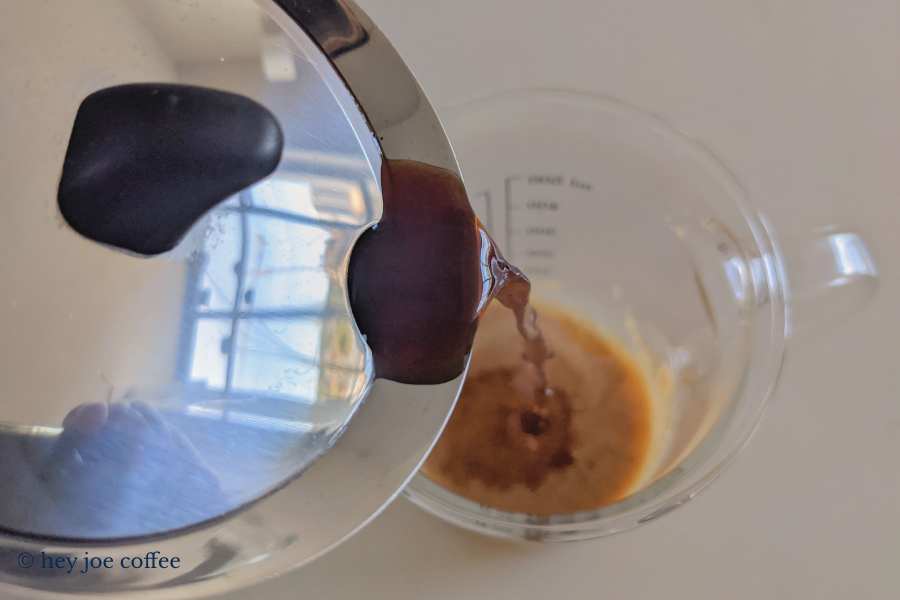Cubans have a special relationship with coffee. Faced with a national shortage, they come up with many creative drinks to enhance the taste and strength of the coffee. But what is colada coffee?
This coffee is one of Cuba’s signature beverages is a reflection of the comradery culture in a cup. Never had alone, it’s a must sharing it with your co-workers, friends or family.
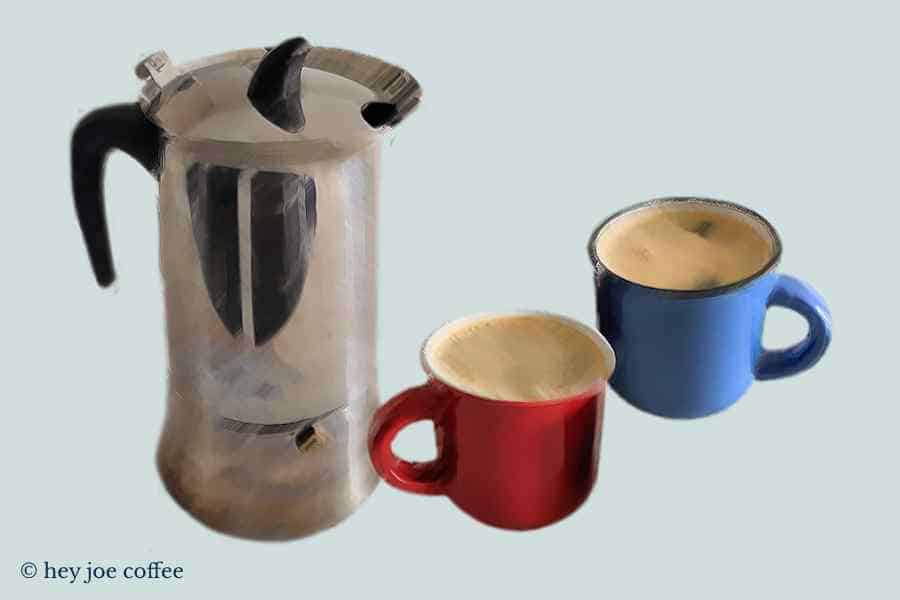
Topics Explored
- What Is Colada Coffee?
- What Makes It Good?
- How to Make It
- Don’t Get Confused with these Drinks
- More Questions
What Is Colada Coffee?
Colada coffee is made by brewing 4 to 6 servings in a stove-top espresso brewer. Then, a tablespoon of the espresso is whisked with sugar to create ‘crema’.
It’s served in small plastic cups meant for sharing among friends. What is it if not a reflection of the Cuban habit of drinking coffee?

The coffee industry in Cuba has a history of ups and downs. In the past, it faced a trade embargo, shortages, and people even mixed it with roasted chickpeas to stretch it out.
Today things are brighter; Cuba even produces and sells organic coffee to Europe and Japan. Cubans use Arabica, brewed in Moka pots with a strength of 25 mg caffeine per 2 oz.
What Makes a Good Colada Coffee?
The greatest place to taste this traditional coffee is the streets of Miami and Cuba. But in the meantime, you can learn how to make this coffee yourself. Get your hands on some authentic Cuban coffee, learn the technique of preparing the espuma, and gather your preferred company!
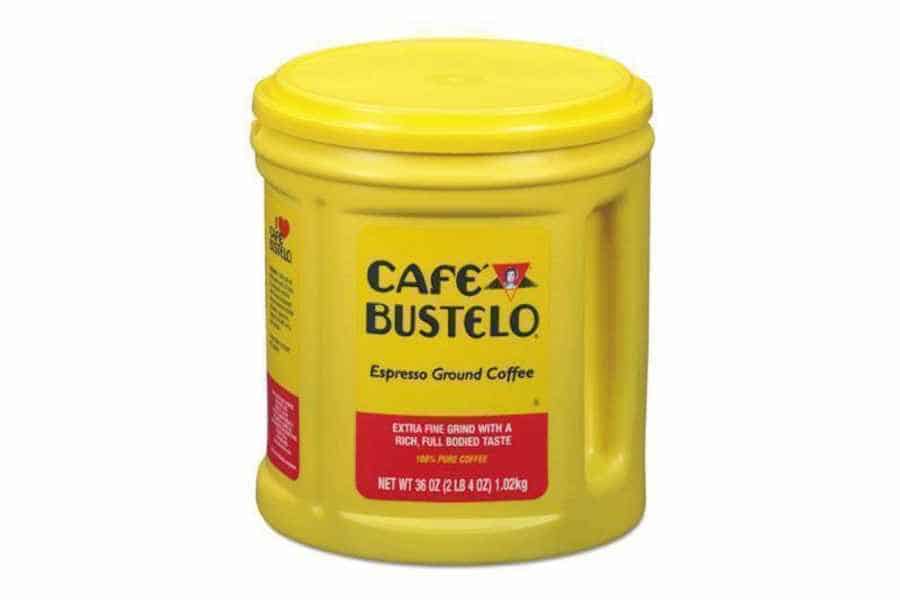
1. Cuban Coffee
Cuban beans is the main ingredient for the Colada. Both Robusta and Arabica are grown in Cuba, but Arabica is the type used for the Colada. The best quality coffee comes from the Sierra Maestra region.
Unfortunately, due to geopolitical reasons, coffee from Cuba is harder to find. Look for brands like Cafe Bustelo and Pilon, which make good Cuban-style coffee.
2. The Espuma
The frothy Espuma is another key component to the perfect cup. A tablespoon of freshly brewed coffee and sugar are mixed vigorously until frothy.
Traditionally, coffee is combined with brown sugar as it was more available in the 60s. White sugar is perfectly acceptable, but it has to be granulated.

3. Using a Moka Pot
This cuban coffee is traditionally made in Moka Pot. It’s present in every household around the Caribbean. The pressurized steam goes through the coffee grounds, brewing dark and robust coffee.
Cuban coffee works best with a Moka Pot since it’s finely ground. It can work with an espresso machine, but not with other brew types like Aeropress or French press.
4. Sharing It
This coffee is a social drink shared in the morning or after a meal. It’s batch-made, serving 4 to 6 persons in small cups called tacitas.
The tacitas are a throwback to the national shortage of coffee. Cubans used the small cups to preserve the limited quantities but still make a strong coffee, and keep up the coffee culture.
Don’t Get Confused with These Drinks
Cubans take pride in their culture and industry, so their drinks list is not limited to the Colada. Ordering Cuban coffee can get you a different drink every time. Learn the differences so you can get what you want.
Colada vs. Cortadito

Colada and Cortadito are small, sweet espresso coffees served in tiny cups, but one crucial difference is the milk.
Cortadito is made with heated and sweetened condensed milk since fresh milk wasn’t as available in the past. But don’t confuse it with the Spanish Cortado, which is unsweetened and made with fresh milk.
Colada vs. Cafe Con Leche
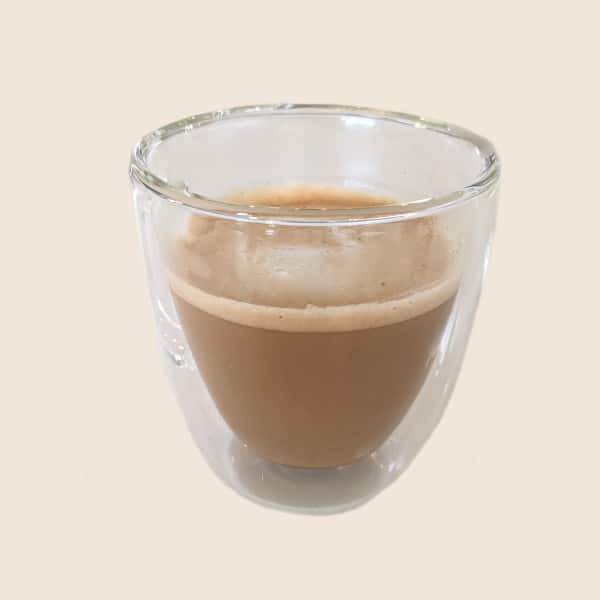
Cafe con Leche is another coffee traditionally featured in the Cuban cafe menus. The Cafe con Leche is made with espresso and milk in an 80:20 ratio.
It’s typically very sweet with a pinch of salt to pronounce the sweetness. The Colada is also sugary but doesn’t include any milk.
Colada vs. Coffee Colada
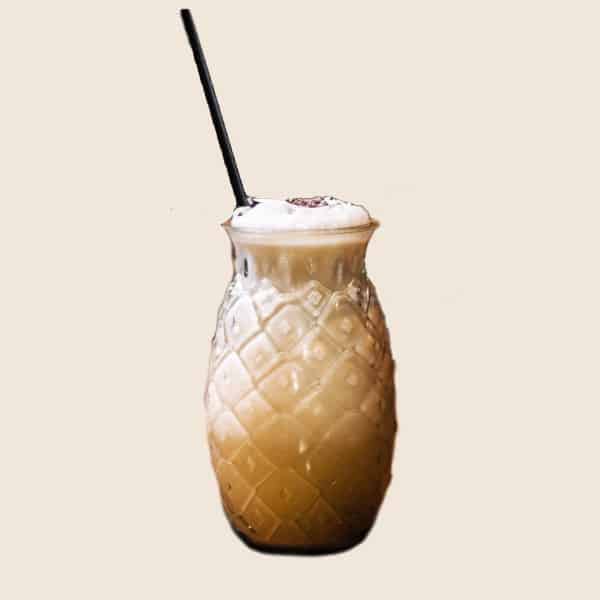
Remember the Piña Colada cocktail? While the original Colada is just espresso and sugar mix, the Coffee Colada is a real feast.
It is kind of coffee version of the cocktail, made with pineapple juice, coconut cream, rum, and iced coffee. A non-alcoholic version is also available. The whipped cream and maraschino cherries are inevitable toppings.
How to Make Colada Coffee
Get immersed into the Cuban coffee culture by learning how to make this strong coffee. The process is simple, but it requires the right ingredients, a coffee brewer, and a little practice. And don’t forget the essential component – your best company.
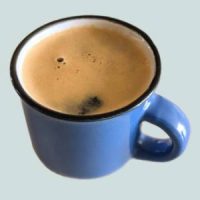
Straightforward Colada Coffee
Grab some friends to share this delicious but potent beverage. This colada coffee recipe is everything you want in a caffeinated cup!
Ingredients
- Cafa Bustelo or finely ground coffee : ~4 tablespoons
- Granulated sugar: 1/4 cup
Gear
- 6-cup Moka Pot*
Instructions
- Prepare the finely ground espresso and a 1/4 cup of sugar**. Brown or white sugar will work just fine.
- Fill the Moka Pot with enough coffee (full or around 4 tablespoons) and water. Pack down the coffee lightly and place the Moka Pot on the stove over moderate heat.
- Place the sugar in a large cup or a pitcher with a spout.
- As soon as the espresso starts to rise in the Moka Pot, transfer half a tablespoon of it over the sugar. Return the coffee to the stove.
- Using a spoon or a whisk, beat the sugar and espresso together for a minute or until the sugar dissolves and the mixture becomes beige. Don't get discouraged if the mixture seems dry at first.
- When the espresso is brewed, pour it over the sugar in the same pitcher. Mix it with a spoon to dissolve the remaining sugar granules. You'll notice a light crema floating at the top.
- Pour the coffee in 6 tacitas, or other small cups. Get your company over and serve right away. The Colada will have you alert and buzzing for the rest of the day!
Notes
* If you have different capacity Moka Pot, simply adjust ingredients accordingly.
** Cuban-style coffee such as Cafe Bustelo or Pilon is preferred, as well as brown sugar, but not mandatory.
Final Thoughts
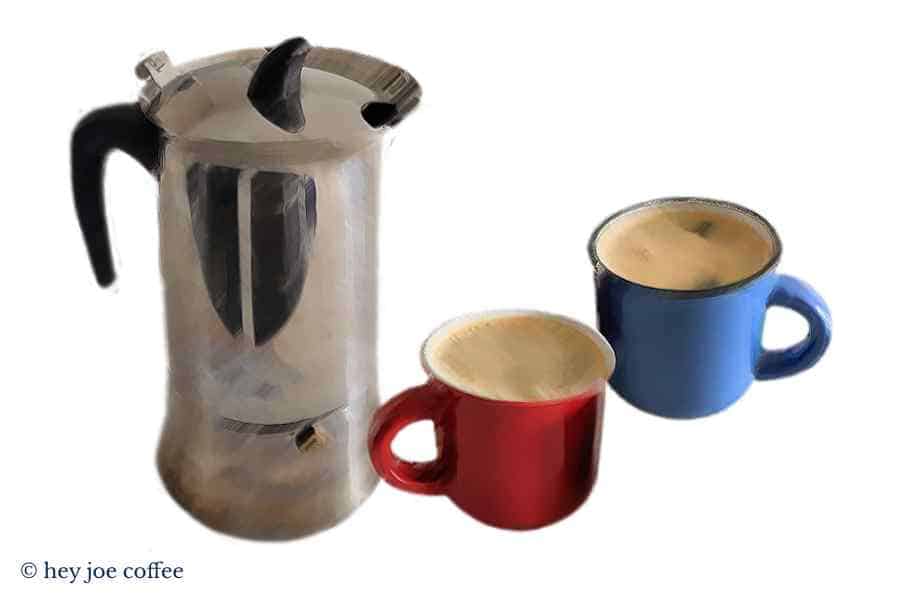
Some nations have a special respect for their coffee culture and did everything to protect it during troubling times. Colada is the real symbol of endurance and true love for this beverage.
What is a Colada coffee? A batch of espresso and sugary espuma, served in tacitas, intended to be shared among friends and family. It’s not only a delicious coffee but a synonym of solidarity.
More Questions
How much caffeine is in a Colada Coffee?
It’s hard to define the exact caffeine content as it depends on the brand of coffee that you use. Cafe Bustelo, for example, has an estimate of 60 to 90 mg caffeine per 6 oz(1).
This means each shot has only 15 mg of caffeine. But original Cuban coffee tends to have more caffeine. The USDA(2) concludes that regular coffee has 96 mg per 8 oz, while Cuban coffee has 484 mg per 8 oz. You notice how USDA and Cafe Bustelo’s estimates vary a lot.
What is unique about Colada Coffee?
The Colada is unique because, unlike regular coffee, it’s prepared in a batch and meant to be shared between 4 to 6 people.
On the streets of Miami, you can see it mixed in a large styrofoam cup and served in small plastic thimbles.
What kind of coffee should you use?
Original Cuban coffee is hard to get your hands on in North America, but there are relatively good substitutes.
The Cuban-style coffees of Cafe Bustelo and Pilon will help you make excellent Colada. If you happen to drop by Little Havana in Miami, you can get gourmet Cuban coffee in the stores on site.
Wondering where your info comes from? We totally understand. Hey Joe only obtains our information from reputable sources. Contents from this article are sourced from the following publications:

